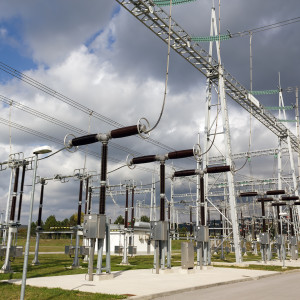There is an intrinsic link between our nation’s energy security and our nation’s economic security, and I believe both are threatened today. As a nation, we are at a crisis point when it comes to the baseload (or 24/7) power plants that we have relied on for decades to ensure electric reliability, provide resiliency to our electric system, and support thousands of well-paying American jobs.
Valuable baseload power plants — including nuclear and coal plants — are being retired prematurely due to expensive regulations, subsidies and mandates for less resilient forms of electricity generation.
Let me be clear: I have worked in the electric power industry for more than 40 years, and this is the most serious threat to our system that I have ever seen.
The current market design dictates that all energy supply decisions be based on the lowest short-term costs, ignoring all of the long-term considerations that once were carefully analyzed by state utility commissions. The consequence is a system that is less efficient and that cannot cover the fixed costs of operating power plants. As a result, nuclear and coal-based power plants, long the predominant resources in our energy mix, are closing at a remarkable pace.
In Ohio, more than 8,600 megawatts of coal-based generation have closed or have announced their closure since 2011. Among those are Dayton Power & Light Company’s 2,318-megawatt J.M. Stuart Station and 666-megawatt Killen Generating Station, slated for closure in 2018. Once a plant is slated for closure, the decision is final, and there is no practical opportunity to bring power plants back to the system after retirement.
Even the cleanest and most efficient power plants are not immune to this challenge. For example, the Clinton nuclear facility in Illinois lost $30 million in 2013, despite running at 100-percent efficiency for the year with no down time.
Along with the closure of these plants is the loss of thousands of well-paying, full-time jobs. It’s not just the power plant workers who are affected by a plant closure — mineworkers, rail workers and plant-support vendors also are affected, not to mention the shop owners, restaurant staff, and community service workers who serve the communities in which these plants are situated.
When a power plant closes, it is standard to assume that there will be four indirect job losses for every one plant worker who loses his or her job. Plant closures and job losses also result in the elimination of a vital economic base and tax dollars that fund schools, police departments, fire stations, libraries and numerous other community services. Many of these losses fall heavily on rural communities, where most of these power plants are.
Other forms of electricity generation simply do not provide the same type of security and resiliency that baseload power plants do. That’s because dedicated, on-site fuel supplies ensure that these plants can withstand disturbances such as severe weather, interruptible fuel contracts, attacks on infrastructure, or other catastrophic events that upset fuel delivery.
The polar vortex of 2014 taught us an important lesson: an overreliance on one source of energy is not a sound policy. While natural gas is now the dominant energy source used to generate electricity, an unexpected disruption in the supply of natural gas can send prices spiraling. We also know that renewable energy sources, such as wind and solar, are variable and are not far along enough in development to provide a major share of our nation’s electricity.
Policymakers must take a step back and look at the important role baseload power plants play in our states and in our local economies. Should we let outside forces dictate our energy security? More important, should we allow safe and reliable power plants to close?
The Department of Energy is undertaking a critically important study of the role of baseload generation, and I encourage all policymakers to examine these issues and the findings of this study before moving forward with any new burdensome regulations that threaten our nation’s economic and energy security.

